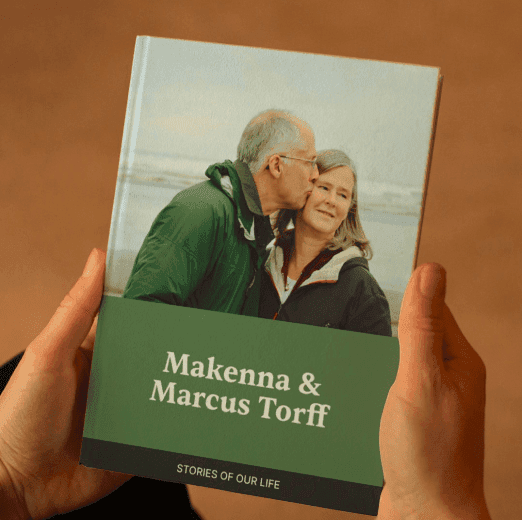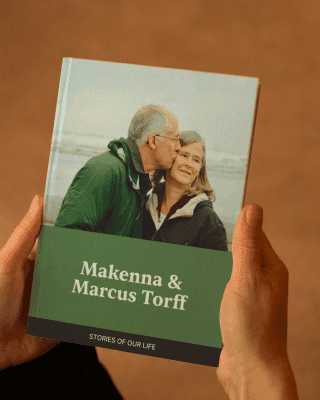Want to preserve your family’s history but don’t know where to start? Here’s how you can begin writing family stories today:
Collect Stories: Interview relatives, use old photos or heirlooms for inspiration, and write down your own memories. Tools like Storyworth and Remento can help with prompts and organization.
Organize Stories: Arrange stories chronologically, by themes (like traditions or milestones), or highlight key events that shaped your family’s journey.
Write and Edit: Use a conversational tone, include vivid details, and refine drafts by reading aloud and gathering feedback from family members.
Use Helpful Tools: Platforms like Memowrite, journaling apps like Day One, or scrapbooking can make the process easier and more engaging.
Start small - choose one memory or tradition and write it down. Your family’s legacy deserves to be preserved for future generations.
Step 1: Collecting Family Stories
Collecting family stories involves combining good interview techniques, inspiration from family keepsakes, and personal reflection. Here’s how you can gather these cherished memories effectively.
How to Conduct Family Interviews
Creating a relaxed and open atmosphere is key to having meaningful conversations with family members. Start with open-ended questions that inspire detailed answers. For instance, instead of asking "Did you like school?" try "What’s your most unforgettable school memory?"
Here are some tips to get the most out of your interviews:
Record the conversation: Use a smartphone or recorder to ensure you don’t miss any details.
Set aside dedicated time: Schedule regular sessions for storytelling and reminiscing.
Ask follow-up questions: Dive deeper by clarifying or expanding on interesting points.
Using Photos and Heirlooms for Inspiration
Family photos, letters, and heirlooms can spark memories and provide historical context. Use these items to ask questions like, “Who is in this photo?” or “What does this object remind you of?” These conversations often lead to fascinating stories and insights.
Writing Down Your Own Memories
When documenting your own memories, focus on vivid details, emotions, and lessons that tie your experiences to the larger family narrative. Make it a habit to write regularly to ensure your contributions become part of the family’s legacy.
"Start small, with something easy. Write down one story a relative told you, or write about an heirloom you cherish." - Annette Gendler [3]
Digital tools like Storyworth and Remento can also help you organize and preserve these stories [2][4].
After collecting these memories, the next step is to organize them in a way that makes your family’s history come alive.
Step 2: Organizing the Stories
Once you've gathered your family stories, the next step is to arrange them in a way that tells a clear and engaging narrative. A well-structured collection helps readers connect the dots between events, people, and generations.
Sorting Stories by Time
Organizing stories chronologically can make your family's history easier to follow. Start by creating a timeline and marking key events, including dates when available. This approach works well for tracing migrations, life milestones, or historical events that influenced your family’s journey.
Interactive tools like EarlyBird or StoryCorps can help you build timelines that are easy to update as you uncover more details [6].
Grouping Stories by Themes
If a chronological order feels too rigid, consider grouping stories by themes instead. Focus on recurring ideas like family traditions, cultural heritage, or shared values. This method highlights the elements that have shaped your family’s identity over time.
For example, you might create sections around memorable meals, holiday traditions, or lessons passed down through generations [1].
Highlighting Key Events
Certain moments stand out as defining points in your family’s story. These events often serve as anchors for the larger narrative. Look for moments that:
Shifted the family’s direction
Taught valuable lessons
Strengthened relationships
Preserved cultural roots
Choose events that evoke strong emotions or offer insights for future generations. These pivotal moments help bring depth and meaning to your family’s history [5].
Digital platforms like Shutterfly and Adobe Spark can make it easier to organize your stories, whether you're using timelines, themes, or multimedia elements [6].
With your stories organized, you're ready to bring them to life through writing and careful editing.
Step 3: Writing and Revising the Stories
With your stories organized, it’s time to turn them into compelling narratives that reflect your family’s unique experiences. The goal is to create stories that connect with future generations by blending personal style with clear storytelling.
Writing in Your Own Voice
The most engaging stories feel personal and genuine. Instead of forcing a formal or overly polished tone, write as if you’re telling these stories to a close friend. Use sensory details to make the scenes come alive - think about the warmth of Grandma's kitchen, the smell of freshly baked bread, or the soft hum of her voice as she prepared Sunday dinner. These small details not only paint a vivid picture but also help convey emotions, personalities, and deeper insights.
Tips for Editing and Improving
Editing takes your rough draft and shapes it into a polished narrative. Here are a few ways to refine your writing:
Read Aloud: Reading your story out loud can help you catch awkward phrasing or unclear sections. It’s also a great way to check if your writing maintains the conversational tone of oral storytelling.
Ask for Feedback: Share your drafts with family members who might remember events differently or catch inaccuracies. Their input can add depth and ensure historical details are correct.
Add Specifics: During revisions, double-check dates, names, and historical context. Ensure the timeline flows smoothly and connects events in a way that makes sense.
Step 4: Tools and Resources to Help You Write
Capturing your family stories becomes easier and more enjoyable with the right tools. These resources can streamline the process and help preserve your family's history in a way that's both engaging and accessible.
How Memowrite Can Help

Memowrite is a platform designed to guide you through storytelling with 50 curated questions, professional writing support, and high-quality book production. It offers three subscription plans to suit different writing styles and schedules:

Using Journaling Apps and Prompts
Digital journaling apps like Day One and Penzu are excellent for personal storytelling. These tools provide structured templates and prompts to help you stay consistent in your writing.
Here are a few prompts to inspire your stories:
Share the story behind a family tradition that’s been passed down.
Write about a cherished family heirloom and its history.
Reflect on a challenge your family faced and overcame together.
Creating Memory Books or Scrapbooks
For families who prefer a hands-on approach, memory books or scrapbooks are a wonderful option. These are especially great for older relatives who may not be as comfortable with digital tools. Involve family members in the process to include a variety of perspectives and make it a collaborative effort.
You can enhance these books with personal touches like photos, documents, handwritten captions, and family trees to create a more vivid and engaging narrative.
With these tools and ideas, you're ready to transform your family's memories into stories that will last for generations. Take the leap and start writing!
Conclusion: Start Writing Your Family Stories Today
You have everything you need to start preserving your family's legacy. Focus on sharing moments that future generations will treasure, using your personal perspective to shape the narrative.
Pick a memory that stands out - maybe a family celebration, a cherished heirloom, or a tradition that has been passed down. Writing with honesty and heart makes your stories resonate, creating a bridge between generations.
Here are some tips to help you get started:
Pick a Starting Point: Choose a memory that feels meaningful. It could be an event, an object, or an experience that reflects your family’s values or history.
Stay Consistent: Dedicate a bit of time regularly to writing. Set goals that fit into your routine and use tools or templates to keep things organized.
Involve Others: Reach out to family members for their input and perspectives. You can also join storytelling groups or use platforms like Memowrite for extra guidance and motivation.
Your stories hold the lessons, experiences, and wisdom that define your family’s journey. They help younger generations connect with their roots and build a sense of identity. Every story you document strengthens these ties and ensures your family’s history is remembered.
Don’t wait - start now. Interview a relative, sort through old photos, or jot down a favorite memory. Your family’s story is worth preserving, and you’re the one who can make it happen.
FAQs
What are the prompts for genealogy?
Writing family stories can feel overwhelming, but having the right prompts can make it easier and more enjoyable. These prompts are designed to spark ideas and help you dive into the details of your family's history.
Here are some ideas to get you started:
Family Traditions: Share the story behind a family tradition. It could be a holiday celebration, a cherished family recipe, or a custom that sets your family apart.
First-Time Experiences: Reflect on an ancestor's first encounter with something life-changing, like migrating to a new place, experiencing new technology, or adjusting to unfamiliar customs.
Letter Writing: Imagine writing a letter from the perspective of an ancestor. This can help capture their voice and give a glimpse into their era.
If you're looking for tools to guide you, platforms like Storyworth send weekly prompts and compile the responses into keepsake books [2]. Remento takes a different approach, turning recorded reflections into written stories, complete with QR codes linking to the original audio recordings [2].
These prompts are just a starting point, but they can uncover details that truly bring your family's story to life.
Want to preserve your family’s history but don’t know where to start? Here’s how you can begin writing family stories today:
Collect Stories: Interview relatives, use old photos or heirlooms for inspiration, and write down your own memories. Tools like Storyworth and Remento can help with prompts and organization.
Organize Stories: Arrange stories chronologically, by themes (like traditions or milestones), or highlight key events that shaped your family’s journey.
Write and Edit: Use a conversational tone, include vivid details, and refine drafts by reading aloud and gathering feedback from family members.
Use Helpful Tools: Platforms like Memowrite, journaling apps like Day One, or scrapbooking can make the process easier and more engaging.
Start small - choose one memory or tradition and write it down. Your family’s legacy deserves to be preserved for future generations.
Step 1: Collecting Family Stories
Collecting family stories involves combining good interview techniques, inspiration from family keepsakes, and personal reflection. Here’s how you can gather these cherished memories effectively.
How to Conduct Family Interviews
Creating a relaxed and open atmosphere is key to having meaningful conversations with family members. Start with open-ended questions that inspire detailed answers. For instance, instead of asking "Did you like school?" try "What’s your most unforgettable school memory?"
Here are some tips to get the most out of your interviews:
Record the conversation: Use a smartphone or recorder to ensure you don’t miss any details.
Set aside dedicated time: Schedule regular sessions for storytelling and reminiscing.
Ask follow-up questions: Dive deeper by clarifying or expanding on interesting points.
Using Photos and Heirlooms for Inspiration
Family photos, letters, and heirlooms can spark memories and provide historical context. Use these items to ask questions like, “Who is in this photo?” or “What does this object remind you of?” These conversations often lead to fascinating stories and insights.
Writing Down Your Own Memories
When documenting your own memories, focus on vivid details, emotions, and lessons that tie your experiences to the larger family narrative. Make it a habit to write regularly to ensure your contributions become part of the family’s legacy.
"Start small, with something easy. Write down one story a relative told you, or write about an heirloom you cherish." - Annette Gendler [3]
Digital tools like Storyworth and Remento can also help you organize and preserve these stories [2][4].
After collecting these memories, the next step is to organize them in a way that makes your family’s history come alive.
Step 2: Organizing the Stories
Once you've gathered your family stories, the next step is to arrange them in a way that tells a clear and engaging narrative. A well-structured collection helps readers connect the dots between events, people, and generations.
Sorting Stories by Time
Organizing stories chronologically can make your family's history easier to follow. Start by creating a timeline and marking key events, including dates when available. This approach works well for tracing migrations, life milestones, or historical events that influenced your family’s journey.
Interactive tools like EarlyBird or StoryCorps can help you build timelines that are easy to update as you uncover more details [6].
Grouping Stories by Themes
If a chronological order feels too rigid, consider grouping stories by themes instead. Focus on recurring ideas like family traditions, cultural heritage, or shared values. This method highlights the elements that have shaped your family’s identity over time.
For example, you might create sections around memorable meals, holiday traditions, or lessons passed down through generations [1].
Highlighting Key Events
Certain moments stand out as defining points in your family’s story. These events often serve as anchors for the larger narrative. Look for moments that:
Shifted the family’s direction
Taught valuable lessons
Strengthened relationships
Preserved cultural roots
Choose events that evoke strong emotions or offer insights for future generations. These pivotal moments help bring depth and meaning to your family’s history [5].
Digital platforms like Shutterfly and Adobe Spark can make it easier to organize your stories, whether you're using timelines, themes, or multimedia elements [6].
With your stories organized, you're ready to bring them to life through writing and careful editing.
Step 3: Writing and Revising the Stories
With your stories organized, it’s time to turn them into compelling narratives that reflect your family’s unique experiences. The goal is to create stories that connect with future generations by blending personal style with clear storytelling.
Writing in Your Own Voice
The most engaging stories feel personal and genuine. Instead of forcing a formal or overly polished tone, write as if you’re telling these stories to a close friend. Use sensory details to make the scenes come alive - think about the warmth of Grandma's kitchen, the smell of freshly baked bread, or the soft hum of her voice as she prepared Sunday dinner. These small details not only paint a vivid picture but also help convey emotions, personalities, and deeper insights.
Tips for Editing and Improving
Editing takes your rough draft and shapes it into a polished narrative. Here are a few ways to refine your writing:
Read Aloud: Reading your story out loud can help you catch awkward phrasing or unclear sections. It’s also a great way to check if your writing maintains the conversational tone of oral storytelling.
Ask for Feedback: Share your drafts with family members who might remember events differently or catch inaccuracies. Their input can add depth and ensure historical details are correct.
Add Specifics: During revisions, double-check dates, names, and historical context. Ensure the timeline flows smoothly and connects events in a way that makes sense.
Step 4: Tools and Resources to Help You Write
Capturing your family stories becomes easier and more enjoyable with the right tools. These resources can streamline the process and help preserve your family's history in a way that's both engaging and accessible.
How Memowrite Can Help

Memowrite is a platform designed to guide you through storytelling with 50 curated questions, professional writing support, and high-quality book production. It offers three subscription plans to suit different writing styles and schedules:

Using Journaling Apps and Prompts
Digital journaling apps like Day One and Penzu are excellent for personal storytelling. These tools provide structured templates and prompts to help you stay consistent in your writing.
Here are a few prompts to inspire your stories:
Share the story behind a family tradition that’s been passed down.
Write about a cherished family heirloom and its history.
Reflect on a challenge your family faced and overcame together.
Creating Memory Books or Scrapbooks
For families who prefer a hands-on approach, memory books or scrapbooks are a wonderful option. These are especially great for older relatives who may not be as comfortable with digital tools. Involve family members in the process to include a variety of perspectives and make it a collaborative effort.
You can enhance these books with personal touches like photos, documents, handwritten captions, and family trees to create a more vivid and engaging narrative.
With these tools and ideas, you're ready to transform your family's memories into stories that will last for generations. Take the leap and start writing!
Conclusion: Start Writing Your Family Stories Today
You have everything you need to start preserving your family's legacy. Focus on sharing moments that future generations will treasure, using your personal perspective to shape the narrative.
Pick a memory that stands out - maybe a family celebration, a cherished heirloom, or a tradition that has been passed down. Writing with honesty and heart makes your stories resonate, creating a bridge between generations.
Here are some tips to help you get started:
Pick a Starting Point: Choose a memory that feels meaningful. It could be an event, an object, or an experience that reflects your family’s values or history.
Stay Consistent: Dedicate a bit of time regularly to writing. Set goals that fit into your routine and use tools or templates to keep things organized.
Involve Others: Reach out to family members for their input and perspectives. You can also join storytelling groups or use platforms like Memowrite for extra guidance and motivation.
Your stories hold the lessons, experiences, and wisdom that define your family’s journey. They help younger generations connect with their roots and build a sense of identity. Every story you document strengthens these ties and ensures your family’s history is remembered.
Don’t wait - start now. Interview a relative, sort through old photos, or jot down a favorite memory. Your family’s story is worth preserving, and you’re the one who can make it happen.
FAQs
What are the prompts for genealogy?
Writing family stories can feel overwhelming, but having the right prompts can make it easier and more enjoyable. These prompts are designed to spark ideas and help you dive into the details of your family's history.
Here are some ideas to get you started:
Family Traditions: Share the story behind a family tradition. It could be a holiday celebration, a cherished family recipe, or a custom that sets your family apart.
First-Time Experiences: Reflect on an ancestor's first encounter with something life-changing, like migrating to a new place, experiencing new technology, or adjusting to unfamiliar customs.
Letter Writing: Imagine writing a letter from the perspective of an ancestor. This can help capture their voice and give a glimpse into their era.
If you're looking for tools to guide you, platforms like Storyworth send weekly prompts and compile the responses into keepsake books [2]. Remento takes a different approach, turning recorded reflections into written stories, complete with QR codes linking to the original audio recordings [2].
These prompts are just a starting point, but they can uncover details that truly bring your family's story to life.
Create your legacy today























































